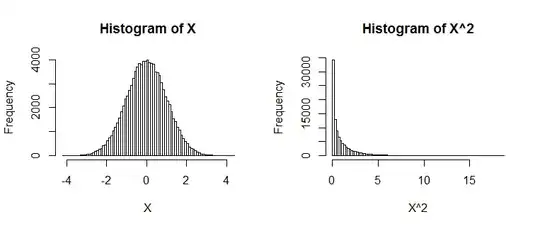As Silverfish said, the problem in your reasoning is that to find the PDF of a squared random variable, or any other transformed random variable, you can't just perform that transformation on the PDF.
If we want to know the actual PDF of a squared random variable we must calculate $P(\chi ^2_1 = x)$. One way to do this is to use the CDF method below,
$P(\chi ^2_1 \leq x) = P(Z^2 \leq x) = P(-\sqrt{x} \leq Z \leq \sqrt{x}) = P(Z \leq \sqrt{x}) - P(Z \leq -\sqrt{x})$
Since the derivative of the CDF is the PDF, we take the derivative of both sides with respect to $x$ and get,
$f_{\chi ^2_1}(x) = \frac{1}{2\sqrt{x}} f_Z(\sqrt{x}) + \frac{1}{2\sqrt{x}}f_Z(-\sqrt{x}) = \frac{1}{2\sqrt{x}} \frac{1}{\sqrt{2\pi}}e^{-x/2} + \frac{1}{2\sqrt{x}} \frac{1}{\sqrt{2\pi}}e^{-x/2} = \frac{1}{\sqrt{x}}\frac{1}{\sqrt{2\pi}}e^{-x/2}$
which is the PDF we expect for a Chi-square distribution with one degree of freedom.
